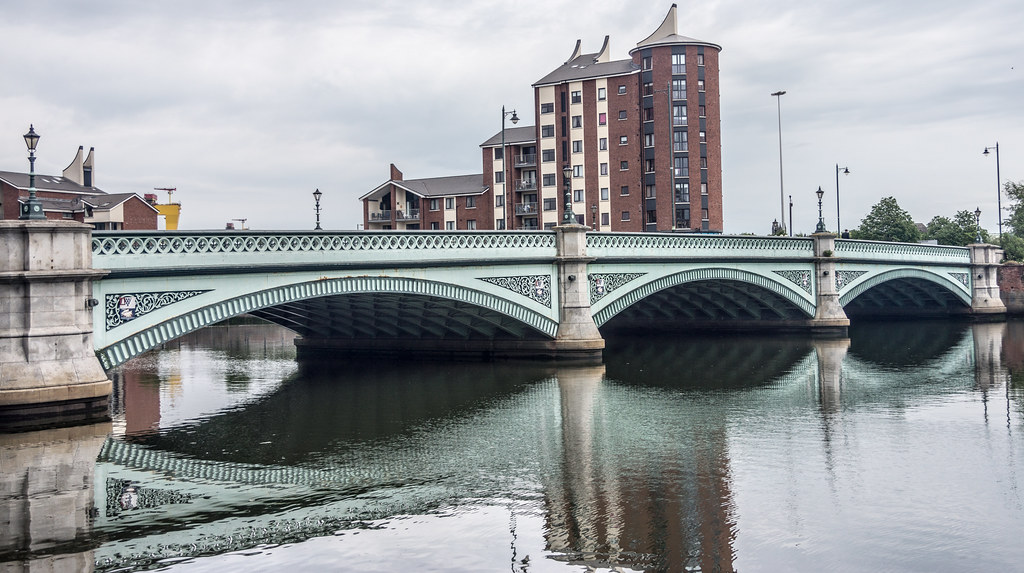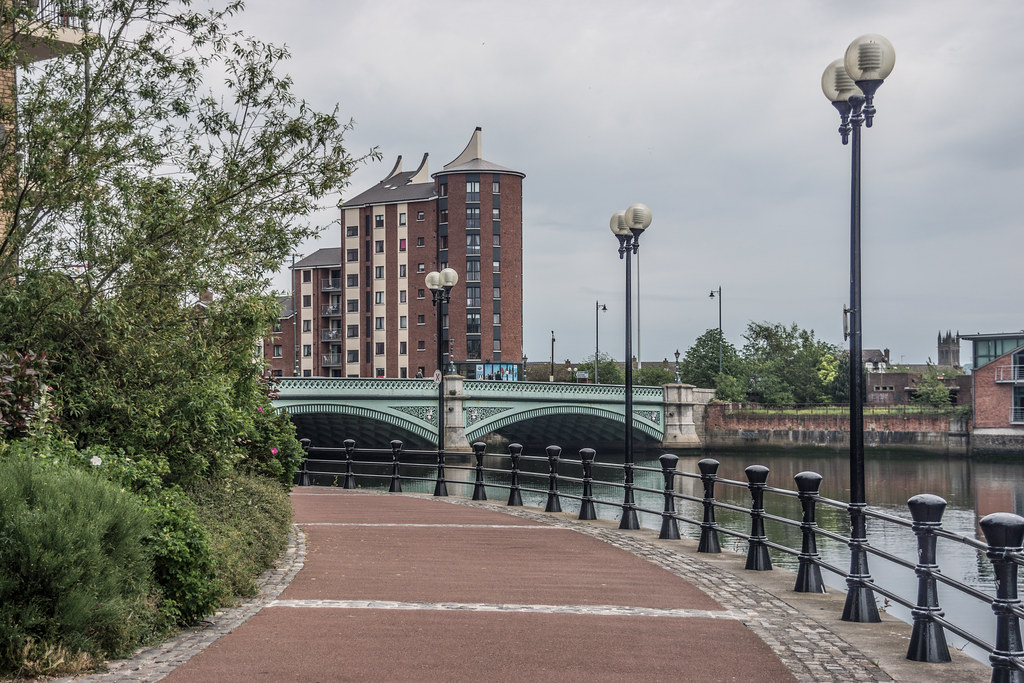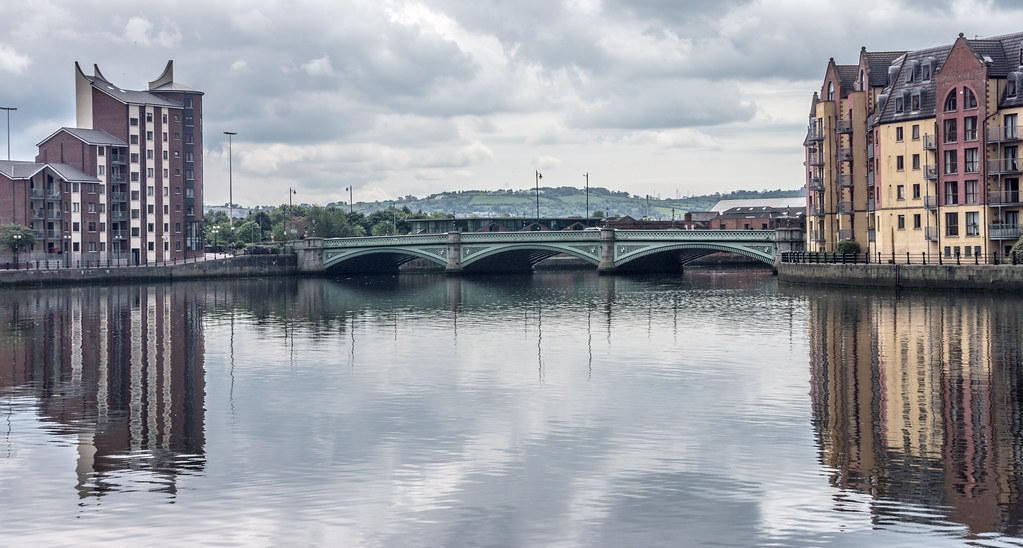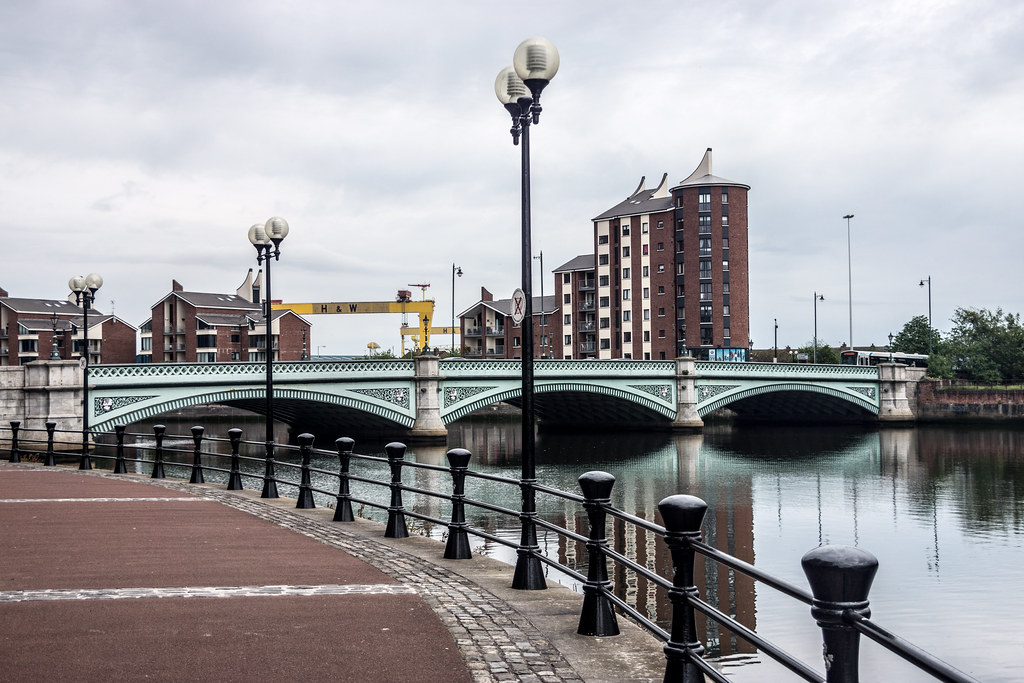THE ALBERT BRIDGE 2012 THE REAL STREETS OF BELFAST
The Albert Bridge is a bridge in Belfast, Northern Ireland. It spans the River Lagan and is one of eight bridges in the city. It was completed in 1890 by Belfast city surveyor J C Bretland after two arches of the previous bridge suddenly collapsed in 1886. It is located close to the city centre between East Bridge Street and the Albert Bridge Road.
In 1886, the first bridge ever built on the Albert Bridge site collapsed, causing a single fatality. A temporary wooden bridge was erected until the present day when the bridge was built. The present bridge was designed by Mr J. C. Bretland, the Borough Surveyor of Belfast at the time, and was constructed by Messrs Henry of Belfast on behalf of Belfast Corporation, at a cost of £36,500. All of the cast iron including the decorative lampposts were made in Derby by Andrew Handyside & Co. It was opened in 1890 and named after Queen Victoria’s grandson, Prince Albert Victor, who laid a foundation stone in 1889.
In 1998 the first phase of work on the bridge was carried out by Roads Service, involving replacing, strengthening and waterproofing the concrete bridge deck. The second phase replaced corroded wrought iron structural members supporting the bridge deck with new structural steel members. The final phase, in autumn 2001, involved the removal of existing paint and rust and application of a new paint system for corrosion protection, which should ensure no repainting will be needed for the next 15 years. Floodlighting was also being installed. Total cost of restoration was about £1 million.
In 1886, the first bridge ever built on the Albert Bridge site collapsed, causing a single fatality. A temporary wooden bridge was erected until the present day when the bridge was built. The present bridge was designed by Mr J. C. Bretland, the Borough Surveyor of Belfast at the time, and was constructed by Messrs Henry of Belfast on behalf of Belfast Corporation, at a cost of £36,500. All of the cast iron including the decorative lampposts were made in Derby by Andrew Handyside & Co. It was opened in 1890 and named after Queen Victoria’s grandson, Prince Albert Victor, who laid a foundation stone in 1889.
In 1998 the first phase of work on the bridge was carried out by Roads Service, involving replacing, strengthening and waterproofing the concrete bridge deck. The second phase replaced corroded wrought iron structural members supporting the bridge deck with new structural steel members. The final phase, in autumn 2001, involved the removal of existing paint and rust and application of a new paint system for corrosion protection, which should ensure no repainting will be needed for the next 15 years. Floodlighting was also being installed. Total cost of restoration was about £1 million.

2012 THE ALBERT BRIDGE IN BELFAST 001

2012 THE ALBERT BRIDGE IN BELFAST 002

2012 THE ALBERT BRIDGE IN BELFAST 003

2012 THE ALBERT BRIDGE IN BELFAST 004
You will find links to buy products from Amazon, Google and other partners. If you click on these links, you’ll find that the URL includes a small extra piece of text which identifies that the click came from my websites. This text is an affiliate code, and it means that I get a small percentage of the money you spend if you choose to buy that product, or, in some cases, other products from the site soon after. These affiliate links help pay the costs of producing my websites and ensure that the content is free to you.